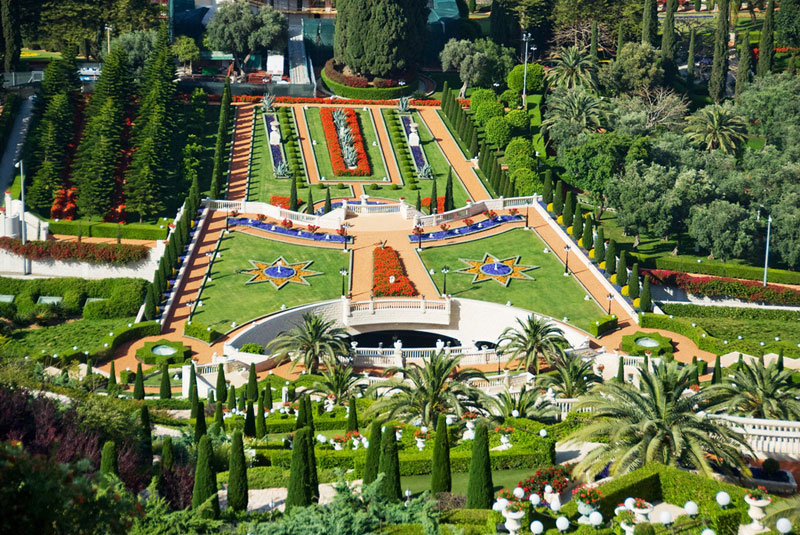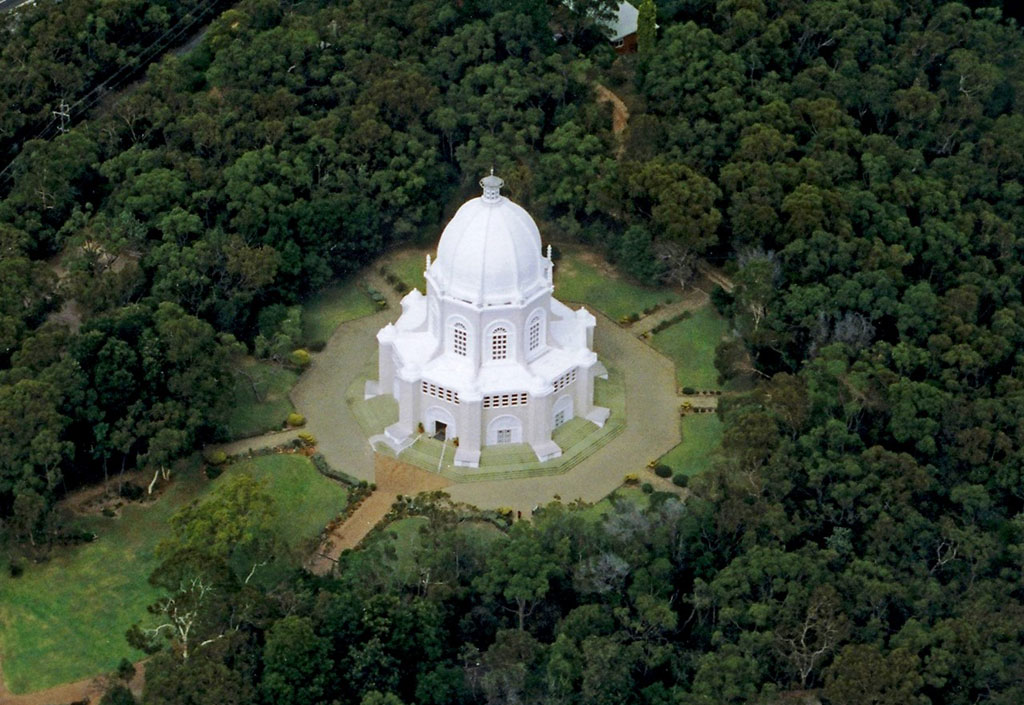Sacred sites of Baha religion in Haifa in the west of Galilee
The United Nations Science, Education and Culture Organization recognized the sacred sites of Baha'i religion in Haifa in the west of Israel's Galilee as a World Cultural Heritage in 2008.

Baha'i is a major religion in the world, operating independently of other religions and having followers everywhere in the world. In Arabic language, Baha'i means He follows the light of God . This religion was born in 1863 in the former Persia, now Iran, the founder is Baha'u'llah. Baha'i religion originates from Babi religion.
The sacred sites of Baha'i religion in Haifa to the west of Galilee include 02 Mausoleums, Holy Lang Duc Bab and Bahá'u'lláh German Mausoleum , also known as Bahá'u'lláh's tomb. Đức Báb is located in Haifa while Bahá'u'lláh is located in Acre.

Baha'i Temple
The holy tomb of Đức Báb is the place where Báb's remains - the founder of Báb religion - also originated from Baha'i religion. This is considered the 2nd sacred place after the Bahá'u'lláh temple. The exact location of St. Lang Bab lies on Mount Carmel because the founder of Baha'u'llah entrusted his eldest son, Abdu'l - Baha, in 1891. Abdu'l - Baha completed the design. and detailed plan for the project. Bab's remains were laid on March 21, 1909 in a tomb with 06 rooms built with local stones.
The Saint Lang Duc Bab architecture with a golden dome and stone walls around the shrine was completed in 1953. The golden arches at Saint Lang are the first pure gold-coated tiles used. to build in Baha'i religious architecture. White marble is used in the temple cladding which is taken from the Greek Mount Penteliko. The building dome stands on a cylindrical structure with 18 windows. In 2008, a restoration project both inside and outside St. Lang Duc Bab was carried out, and the project was completed in April 2011. Carmel Mountain is sacred to Baha'i religious followers. The location where Thanh Lang Duc Bab was built was selected by the founder of Baha'i religion so it added even more meaning to the followers of this religion.
Bahá'u'lláh's tomb is also Bahá'u'lláh - the Baha'i religious founder (Baha'i), also the head of Baha'i religion. At this temple the remains of the supreme founder Bahá'u'lláh have been buried. Every year, tens of thousands of followers still come here to pray for their supreme being.


Panorama of the area of Thanh Lang Duc Bab and Bahá'u'lláh German Mausoleum.
When Baha'u'llah died, the leadership of Baha'i was passed to his male chief Abdu'l - Baha (1844 - 1921) (meaning servant of God). Before his death, Abdu 'l - Baha appointed his grandson Shohoghi - Effend (1897-1957) as the Church and leader of the Baha'i religious spirit. After Shoghi-Effendi died, the administration was transferred to an International Council, from which Baha'i religion was formed and developed.
Currently, Baha'i religion has followers in most Muslim countries . Before the 1950s, over 90% of Baha'i followers were Iranians, but now only about 6% of the world's followers. India is the country with the largest number of Baha'i followers in the world, about 2 million people. There are studies that suggest that the majority of Baha'i believers in third world countries are farmers and urban workers, while in Western Europe the Baha'i are mostly in the floor. middle class white.
In 1921 Baha'i followers were in 35 countries around the world. In 1990, 4.9 million followers in 214 countries and territories included representatives of nearly 2,000 ethnic groups and tribes around the world.
In 2000, there were more than 5 million followers in 235 countries and territories.

The landscape around Saint Lang with its overall architecture and green trees is carefully cared for.
Until 2010, Baha'I had about 7 million followers in 235 countries and territories, belonging to more than 2,100 ethnic groups.
The sacred sites of Baha'i religion in Haifa in the west of Galilee are recognized as World Heritage by Unesco according to the following criteria:
Criterion (iii): Holy Tomb of Bahá'u'lláh and Holy Tomb of Bab, is the holiest place of Baha'i religion. Every year thousands of pilgrims come here from all over the world.
Criterion (vi): These two Mausoleums are tangible assets that show the growth of Baha'i religion.
So far, these two Saints are not only symbols of Baha'I religion but also beautiful architecture for international tourists visiting Israel.
- The true origin of the Jerusalem Wall
- There should put religion on the stars?
- The wonderful beauty of the sacred valley of the Incas
- Galilee - 'Father of modern science'
- The sacred temple of Japan used to have the end of the apocalypse?
- Inventors stick to suspicion
- Mysterious stone structure 70 meters in diameter under Israeli sea
- The 1,000-year-old giant sacred hole lies under the Mayan temple
- The sacred book of the Mayans
- Men Island - where anyone comes to stripped and purified
- Archaeological holy sites awaiting the opening in 2018
- Mysterious structure under the Israeli sea
 Suzhou classic bonsai garden - China
Suzhou classic bonsai garden - China Chau Nguyen Dynasty
Chau Nguyen Dynasty Thai Son Mountain - World Wonder
Thai Son Mountain - World Wonder Ancient villages of Shirakawa-go and Gokayama
Ancient villages of Shirakawa-go and Gokayama